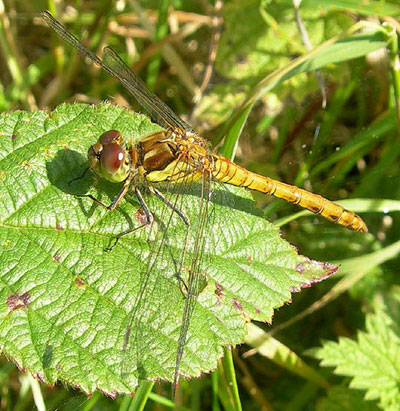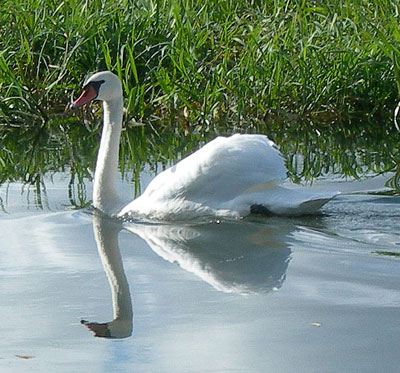
A pleasant sunny day to start October, with no wind either made for a very nice walk along the River Hull this morning.
A short way along the river’s flood defences I heard the noisy call of a Stonechat which I quickly spotted on top of a hawthorn bush. The calling came from a male Stonechat who was quickly joined by a female, and the pair soon flew down into a weedy headland in an arable field. A good number of other birds seemed to be using this weedy patch including 3 Yellowhammers, 6 Meadow Pipits, 7 Reed Buntings, 2 Skylarks and 9 Goldfinches. This peice of land was planned as a wader scrape but currently holds no water, however, its weedy status appears to be useful as a food source for farmland birds.
A little further along the river 2 Swallows flew north, the only ones I saw this morning, presumably most of them have already departed.
On an east-facing grassy bank quite a number of insects were busy feeding and I spotted a Red Admiral butterfly. This species overwinters in this country of course and its fine condition suggests that this individual has only recently emerged and will indeed hibernate here. Here are a number of shots I got of this butterfly. Click on the thumbnails for larger pictures.
At the lake at High Eske huge numbers of Greylag Geese were taking up nearly all of the resting space, but there also seemed to have been an invasion of Cormorants with at least 23 birds present, fishing, sitting on the island and perched upon trees. There were also a lot of Great Crested Grebes with at least 14 birds and numbers of Tufted Ducks had also gone up to 46. A number of Mallard, 3 Teal and the long-staying female Goldeneye were also to be seen along with Coot, Moorhen and 3 Mute Swans as well as a further Mute Swan in the River Hull.

Also on the lake were about 30 Black-headed Gulls, but on closer inspection there was also a Little Gull amongst them – an adult moulting into winter plumage. Walking further up river to some ploughed fields 3 Curlews flew east, calling as they went. On the fields themselves were a group of about 40 Lapwings, 60 Black-headed Gulls, 30 Common Gulls, a number of Woodpigeons, 3 Stock Doves, Starlings, Rooks and Jackdaws along with a Grey Heron.
I decided to walk back through the long grass to see what insects I might disturb and it turned out that there were quite a few Dragonflies around. I got a few decent photographs of some of them.

I think the first 2 of the photos below are the same species, but different sexes, but I think the 3rd picture is of a different species – not sure though. Click for larger pictures.
On the way back to the car I came across a few Large White butterflies, 1 Small White and 1 Small Tortoiseshell. I also watched two Black-headed Gulls violently and noisily mobbing a juvenile Kestrel; they drove it into a copse but continued to circle and call at it even after it had fled to safety.


 October 1st, 2007
October 1st, 2007  Nick
Nick 











 Posted in
Posted in 











Yes, there seems to be enough of a balance between damp patches, bare ground and weeds (grasses and wildflowers) to be a superb source of invertebrates and various seeds. Certainly yesterday there were lots of small birds feeding in the area.
Dude has the wader scrape dried out? The best plans fail sometimes.
I don’t think it matters that it dries out as long as it fills up with water regularly it should provide good invert biomass.
Cheers
Si